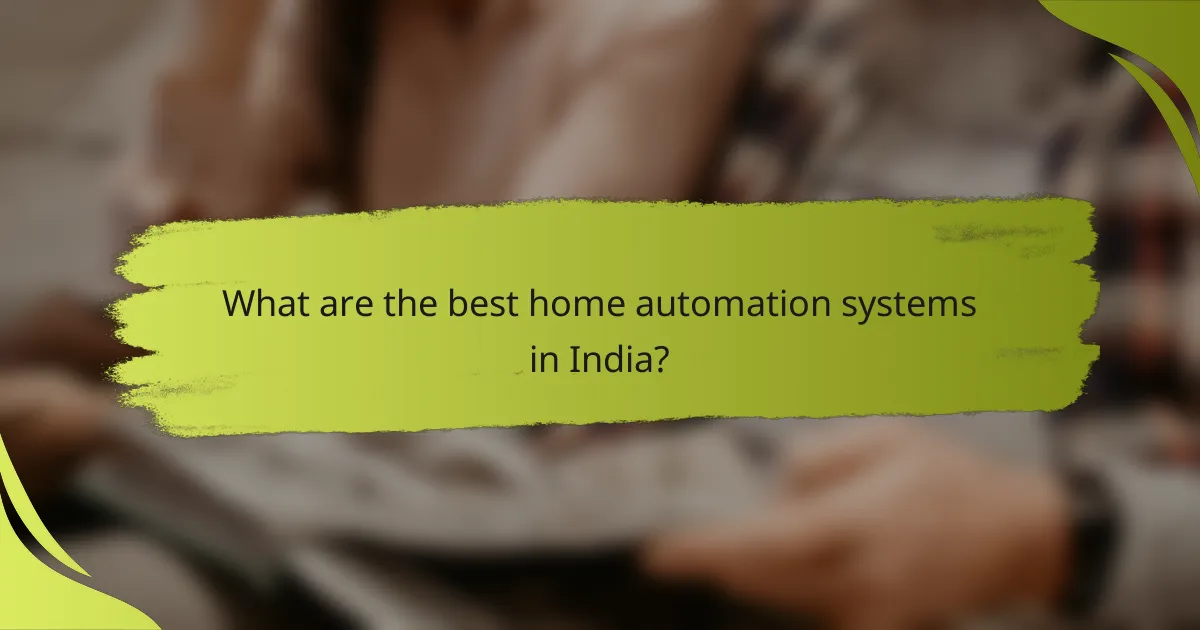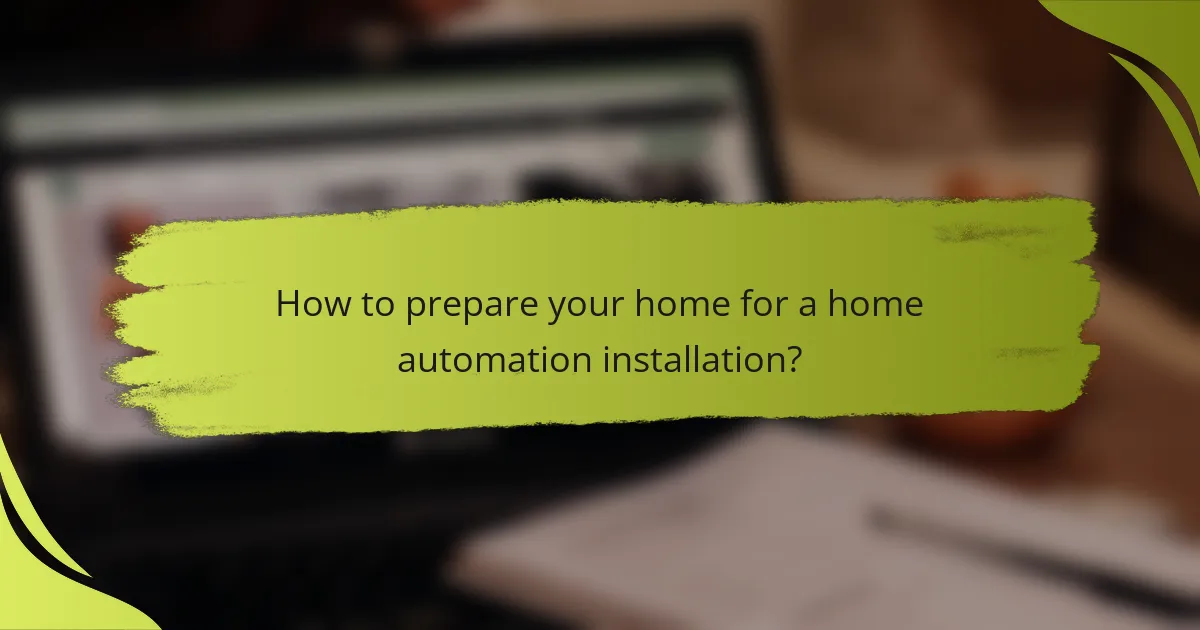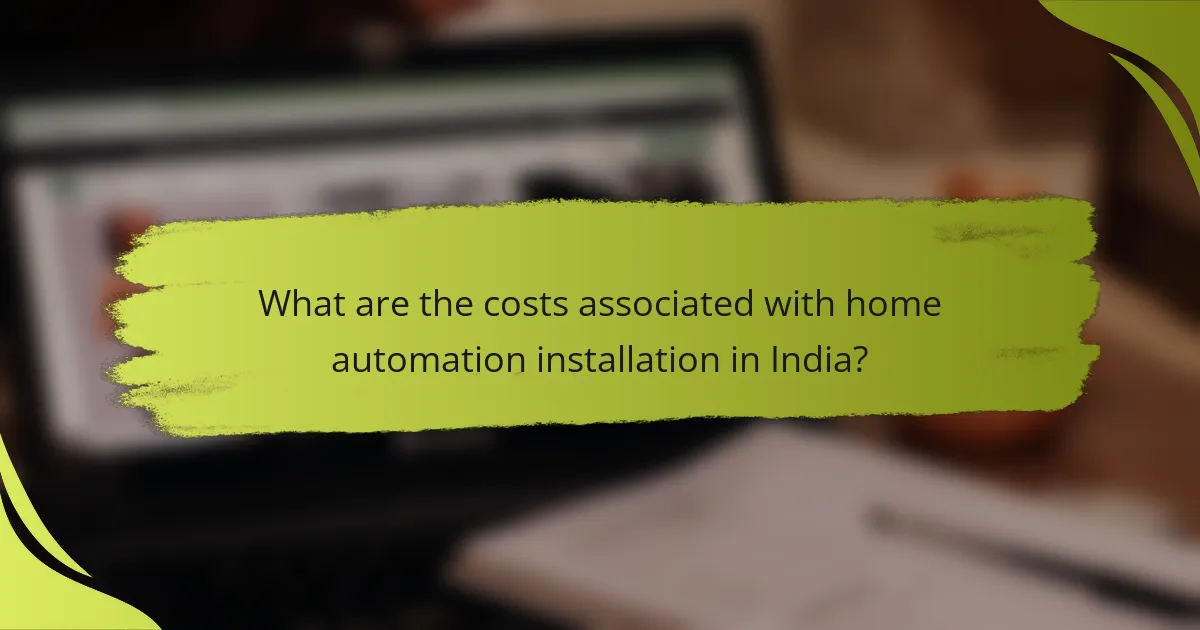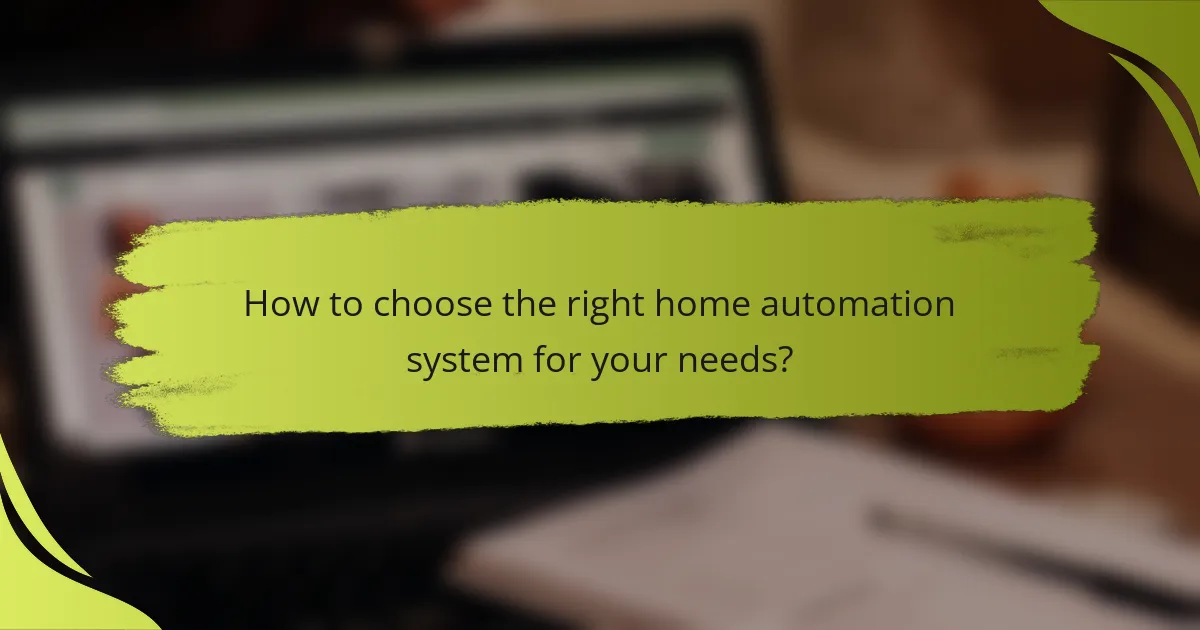Preparing your home for a home automation installation is essential for a seamless transition to smart living. Begin by assessing your current infrastructure and identifying the features you desire, ensuring compatibility with devices like Amazon Echo and Google Nest Hub. This foundational work will facilitate a smoother integration of technology into your daily life.

What are the best home automation systems in India?
The best home automation systems in India combine ease of use, compatibility with various devices, and affordability. Popular options include Amazon Echo, Google Nest Hub, Philips Hue, TP-Link Kasa Smart, and Wink Hub 2, each offering unique features to enhance your smart home experience.
Amazon Echo
Amazon Echo is a versatile smart speaker that integrates with Alexa, allowing voice control over various smart devices. It supports a wide range of compatible products, making it a great choice for those looking to start their home automation journey.
Consider the Echo’s ability to control lights, thermostats, and security systems through simple voice commands. Additionally, it offers features like music streaming and news updates, adding to its functionality.
Google Nest Hub
The Google Nest Hub serves as a smart display that combines voice control with a visual interface. It allows users to manage smart home devices, view security camera feeds, and access Google services seamlessly.
With its built-in Google Assistant, the Nest Hub can set reminders, control compatible devices, and even display recipes while cooking. This makes it an excellent option for those who prefer a more interactive experience.
Philips Hue
Philips Hue specializes in smart lighting solutions, offering a range of bulbs and fixtures that can be controlled remotely. Users can customize lighting scenes, schedules, and colors to enhance their home environment.
Integration with platforms like Amazon Alexa and Google Assistant allows for voice control, while the Hue app provides an intuitive way to manage lighting throughout the home. Consider starting with a starter kit for easy setup.
TP-Link Kasa Smart
TP-Link Kasa Smart offers a variety of smart home devices, including plugs, cameras, and lights, all manageable through a single app. This system is known for its affordability and ease of installation, making it suitable for beginners.
With Kasa Smart, users can set schedules, monitor energy usage, and control devices remotely. Its compatibility with both Alexa and Google Assistant enhances its usability in a smart home setup.
Wink Hub 2
The Wink Hub 2 acts as a central hub for various smart devices, allowing users to control them from a single app. It supports a wide range of protocols, making it compatible with numerous brands and devices.
Wink Hub 2 is ideal for those looking to integrate multiple smart home products into one system. Its user-friendly interface and automation features simplify managing different devices, ensuring a cohesive smart home experience.

How to prepare your home for a home automation installation?
Preparing your home for a home automation installation involves assessing your current infrastructure, identifying the features you want, and selecting compatible devices. This groundwork ensures a smoother integration of smart technology into your living space.
Assess existing wiring and infrastructure
Start by examining your home’s electrical wiring and network infrastructure. Check for outdated wiring that may not support modern devices, as well as the availability of Wi-Fi or Ethernet connections in key areas. Older homes may require upgrades to accommodate smart technology.
Consider the layout of your home and where devices will be installed. Ensure that outlets are accessible and that there is adequate coverage for wireless devices. This may involve consulting with a professional electrician to evaluate your current setup.
Identify desired automation features
Determine which automation features are most important to you, such as lighting control, security systems, or climate management. Prioritize features based on your lifestyle and needs, as this will guide your device selection and installation process.
Think about how these features will integrate with each other. For example, a smart thermostat can work with smart blinds to optimize energy efficiency. Make a list of must-have features versus nice-to-have options to streamline your planning.
Choose compatible devices
Select devices that are compatible with each other and with your existing infrastructure. Research brands and models that work well together, as some may have proprietary systems that limit interoperability. Look for devices that support common standards like Z-Wave or Zigbee for better integration.
Consider future expandability when choosing devices. Opt for systems that allow for easy addition of new features or devices as your automation needs evolve. Reading user reviews and expert recommendations can also help in making informed choices.

What are the costs associated with home automation installation in India?
The costs associated with home automation installation in India can vary widely based on the complexity of the system and the devices chosen. Generally, homeowners can expect to invest in both installation services and the devices themselves, which together can range from moderate to significant amounts depending on the scope of the project.
Average installation costs
Installation costs for home automation systems in India typically range from INR 10,000 to INR 50,000, depending on the size of the home and the complexity of the setup. Basic installations may cost less, while comprehensive systems that integrate multiple devices and features will be on the higher end of the spectrum.
It’s advisable to obtain quotes from multiple service providers to ensure competitive pricing. Additionally, consider whether the installation includes ongoing support or maintenance, as this can impact long-term costs.
Device pricing ranges
The pricing for individual home automation devices can vary significantly. Smart lights may cost between INR 1,000 to INR 5,000 each, while smart thermostats can range from INR 5,000 to INR 15,000. More advanced devices, such as security cameras and smart locks, can range from INR 3,000 to INR 20,000 or more.
When budgeting for devices, consider the total number needed and any additional accessories required for full functionality. Bundled packages may offer savings compared to purchasing devices individually.
Long-term savings on energy bills
Investing in a home automation system can lead to significant long-term savings on energy bills. Smart thermostats and lighting systems can reduce energy consumption by optimizing usage based on occupancy and time of day, potentially lowering monthly bills by 10-30%.
Additionally, many systems provide insights into energy usage, allowing homeowners to make informed decisions about their consumption. Over time, these savings can offset the initial investment in the automation system, making it a financially sound choice.

What are the prerequisites for a successful home automation setup?
To ensure a successful home automation setup, you need a reliable internet connection, a compatible device for control, and a basic understanding of smart home protocols. These elements are crucial for seamless integration and functionality of your smart devices.
Stable internet connection
A stable internet connection is essential for a home automation system to function effectively. Most smart devices rely on Wi-Fi to communicate with each other and with your control device. Aim for a broadband connection with speeds of at least 25 Mbps to support multiple devices simultaneously.
Consider the layout of your home when setting up your network. If your home is large or has thick walls, you may need a mesh Wi-Fi system or additional access points to ensure consistent coverage throughout your space.
Smartphone or tablet for control
Having a smartphone or tablet is critical for controlling your home automation system. Most smart home devices are managed through dedicated apps available on iOS and Android platforms. Ensure your device is compatible with the apps required for your specific smart devices.
Keep your device updated to the latest operating system version to avoid compatibility issues. Regularly check for app updates as well, as these can improve functionality and security.
Understanding of smart home protocols
Familiarity with smart home protocols is important for integrating various devices into your automation system. Common protocols include Wi-Fi, Zigbee, and Z-Wave, each with its own strengths and weaknesses. Understanding these can help you choose devices that work well together.
For example, Zigbee and Z-Wave are often used for low-power devices and can create a mesh network, enhancing reliability. Research the protocols supported by your devices to ensure they can communicate effectively and avoid potential connectivity issues.

How to choose the right home automation system for your needs?
Choosing the right home automation system involves assessing your specific requirements, preferences, and existing devices. Focus on compatibility, ease of use, and the features that matter most to you.
Evaluate user interface preferences
User interface preferences play a crucial role in your home automation experience. Consider whether you prefer a mobile app, voice control, or a physical remote. Each option has its advantages; for instance, mobile apps offer flexibility, while voice control provides convenience.
Test different interfaces if possible. Look for systems that allow customization of the user experience, such as adjusting settings or creating automation routines. A user-friendly interface can significantly enhance your overall satisfaction with the system.
Consider integration with existing devices
Integration with your current devices is essential for a seamless home automation experience. Check if the system supports popular standards like Zigbee, Z-Wave, or Wi-Fi, which can help connect various devices together. Compatibility with existing smart devices can save you money and reduce the hassle of replacing equipment.
Make a list of your current devices and their specifications before purchasing a new system. This will help you identify which home automation systems can work with your existing setup. Avoid systems that require proprietary devices unless you are willing to invest in new hardware.
